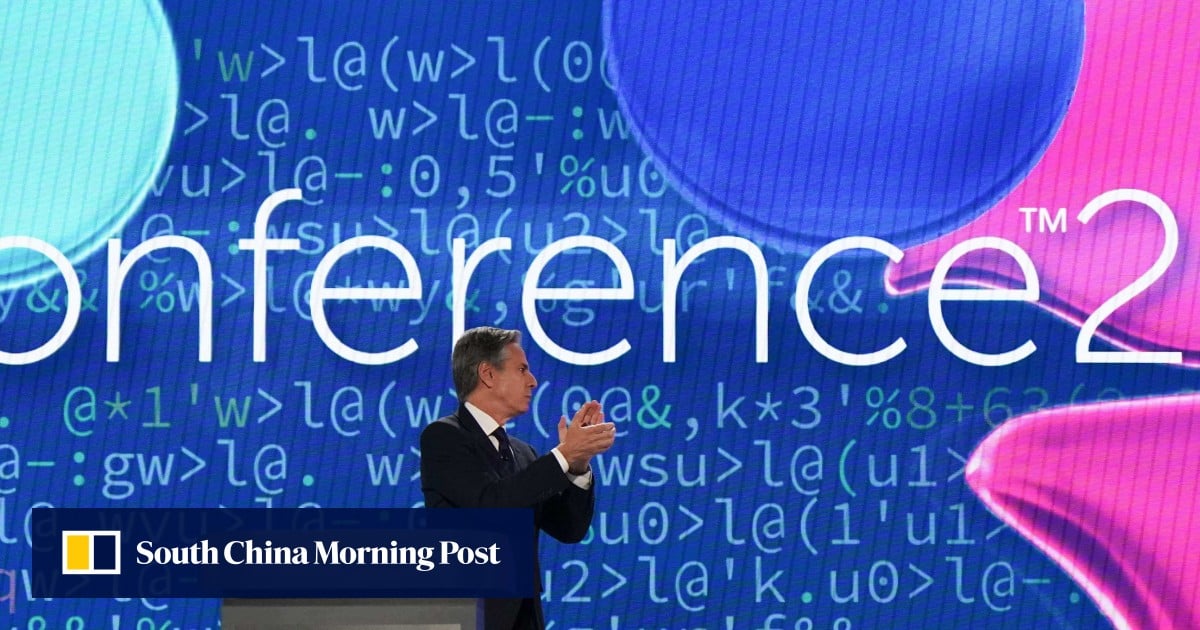He said the US is committed to “digital solidarity” not “digital sovereignty” – a willingness to help other countries build capacity and guide engagement on technology diplomacy.
According to Blinken, one of the strategy’s goals is to elevate the role of the US in countering cyberthreats globally and enhancing governance in regulating advanced technologies such as AI.
“We’re harnessing technology for the betterment not just of our people and our friends, but of all humanity … Some of our strategic rivals are working toward a very different goal,” Blinken said, without naming China.
“They’re using digital technologies and genomic data collection to surveil their people to repress human rights, weaponising dominance and critical supply chains to coerce other governments, employing AI-based tools to deepen polarisation and undermine democracies,” he said.
Blinken’s reference to genomic data collection echoes accusations made by Washington and some human rights groups that Beijing uses the practice as a form of control and surveillance of ethnic minorities in Xinjiang and Tibet. The Chinese government has denied the allegation.
In one of only two direct references to China, Blinken said the US is “working with partners to set cyber norms and uphold them around the world – as we did by publicly calling out the PRC [People’s Republic of China] for targeting US critical infrastructure”.
President Joe Biden signed an executive order in February pushing maritime vessels and ports to shore up cybersecurity after US officials raised alarms that Beijing could remotely operate Chinese-manufactured cranes to disrupt the flow of goods.
In another apparent reference to China, Blinken said the US and its allies should “move quickly… to harness the benefits and protect against the risks” of quantum computing “so that we don’t fall behind as rivals pour money into developing machines with capabilities beyond even the most powerful supercomputers”.
Beijing promotes China-led vision for Digital Silk Road at Xian forum
Beijing promotes China-led vision for Digital Silk Road at Xian forum
“We’ve learned from the 5G experience that we cannot be complacent and let strategic competitors dominate the technologies that form the backbone of the global economy and that determines how and where information flows,” he said.
Chinese authorities have stressed the need for technological breakthroughs in a range of hi-tech areas – including quantum computing and graphics processing units – as part of Beijing’s latest effort to seek control of “the industries of the future”.
Washington’s strategy is part of a growing US-led effort to counter China’s advances in emerging technologies such as AI, 5G and quantum computing, accompanied by its global technological spread through initiatives such as the “digital silk road”.
In 2021, the US and European Union announced a Trade and Technology Council, which aimed to strengthen members’ strategic technology supply chains while reducing their shared reliance on China’s manufacturing juggernaut.
China highlights data and ‘digital silk road’ in new plan to drive innovation
China highlights data and ‘digital silk road’ in new plan to drive innovation
In his only other direct reference to Beijing on Monday, Blinken noted that 80 per cent of critical minerals are processed in China.
He also noted that in areas like cloud computing and data storage, the US “currently leads the world but providers from authoritarian states are increasingly competitive”.
“It is critical that we work with trusted vendors and exclude untrustworthy ones from the ecosystem. And we can only do that if we establish economies of scale with our partners and draw on a respective competitive advantage,” Blinken said.

